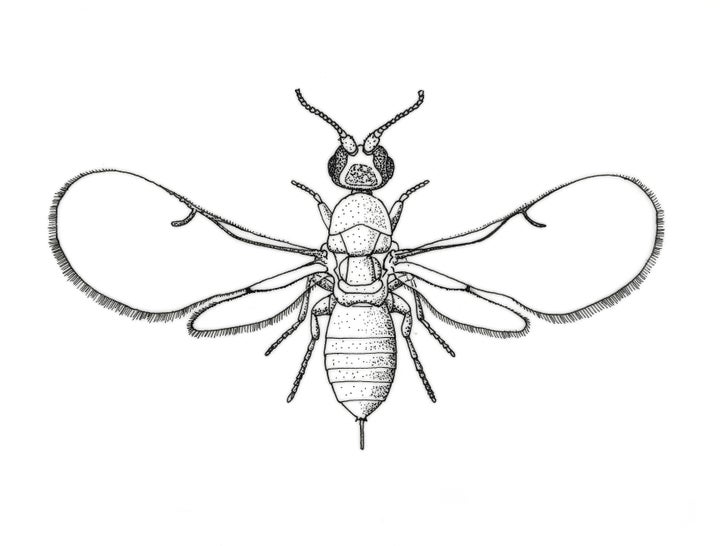Most of the figs from a classic fig tree contain at least one dead wasp.
It was eye-opening when we learned that artichokes are actually flowers. And that capers are pickled flower buds. But coming across what figs really are ― and the wasp that makes them possible ― has just made us question every truth we know in this world.
In simple terms, figs are technically not a fruit ― they are inverted flowers. Fig trees don’t flower like apples and peaches. Their flowers bloom inside the pear-shaped pod, which later matures into the fruit we eat. Each flower then produces a single, one-seeded, hard-shelled fruit called achene ― that’s what gives the fig the crunch we know ― and the fig is made up of multiple achene. So when we eat a fig we are actually eating multiple fruits.
But that’s not the end of the uniqueness that sets the fig apart.
Because fig flowers bloom internally, they need a special process for pollination. They cannot rely on the wind or bees to spread their pollen ― that’s where the fig wasp comes in. The fig cannot survive without the fig wasp to spread its genetic material, and the fig wasp cannot live without the fig, because that’s where it lays its larva ― this relationship is known as mutualism.

The female fig wasp enters the male fig ― we don’t eat the male figs, by the way ― to lay its eggs. The male fig is shaped in a way to accommodate the laying of wasp eggs. The female wasp’s wings and antennae break off when entering the small passage in the fig so once it’s in, there is no way out. It’s up to the baby wasps to continue the life cycle. Male baby wasps are born without wings, because their sole purpose is to mate with the female offspring ― technically their sister ― and dig a tunnel out of the fig. It’s the female offspring that make the journey out, bringing pollen with them.
Credit: Source link